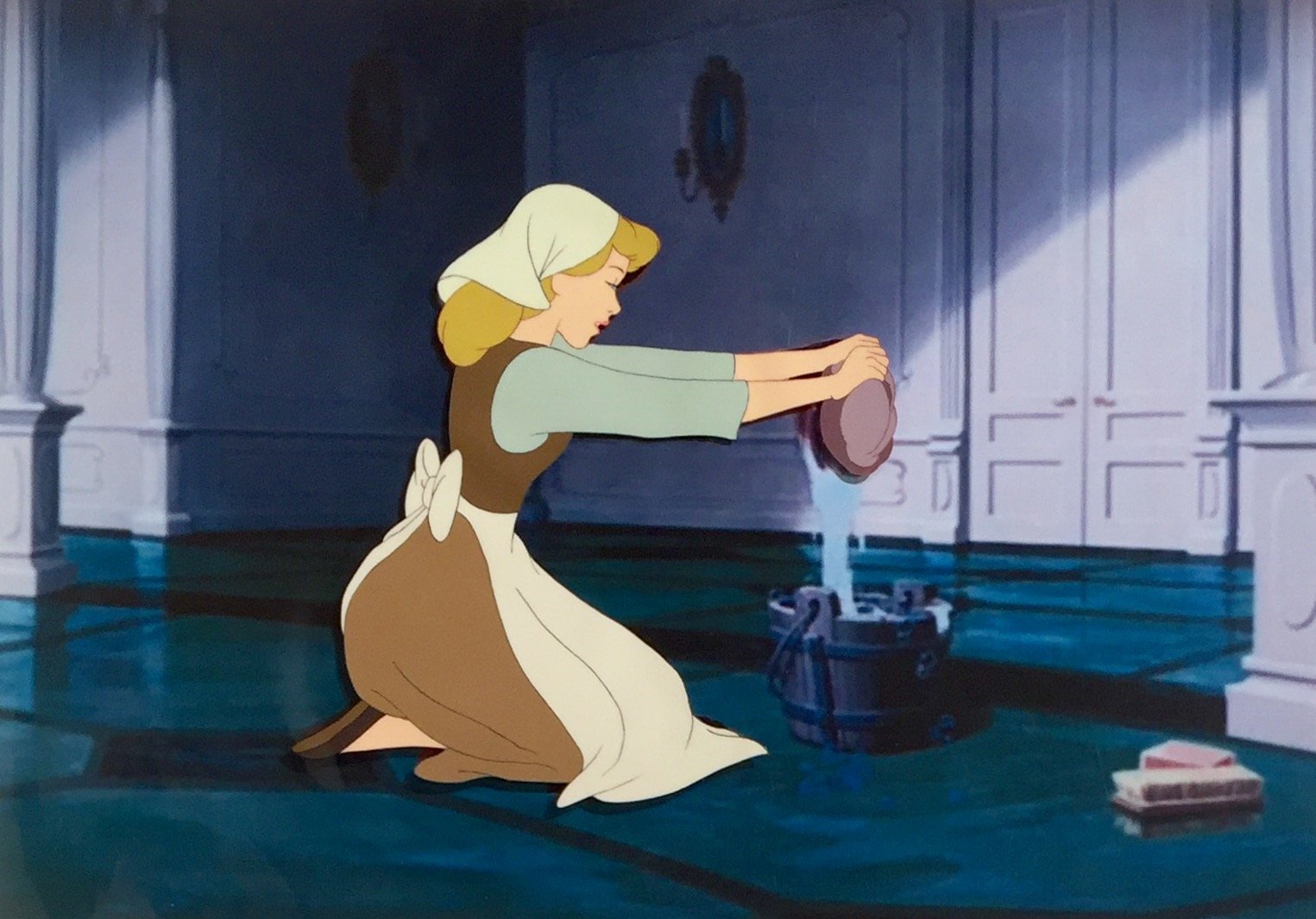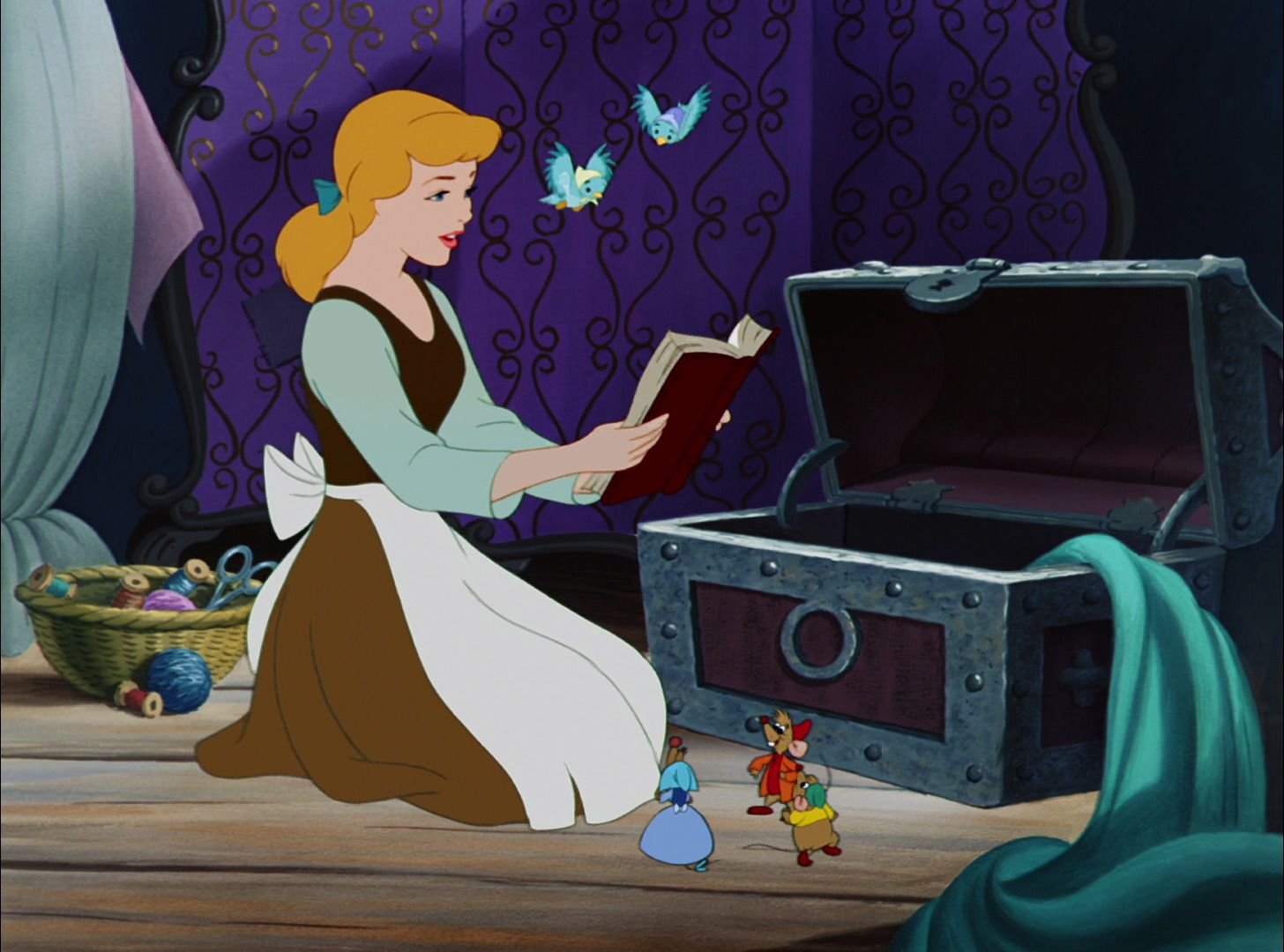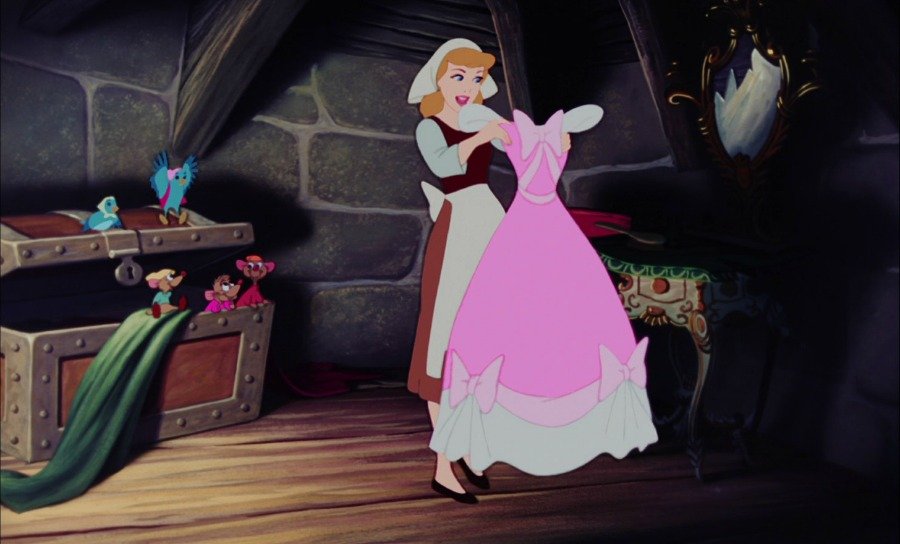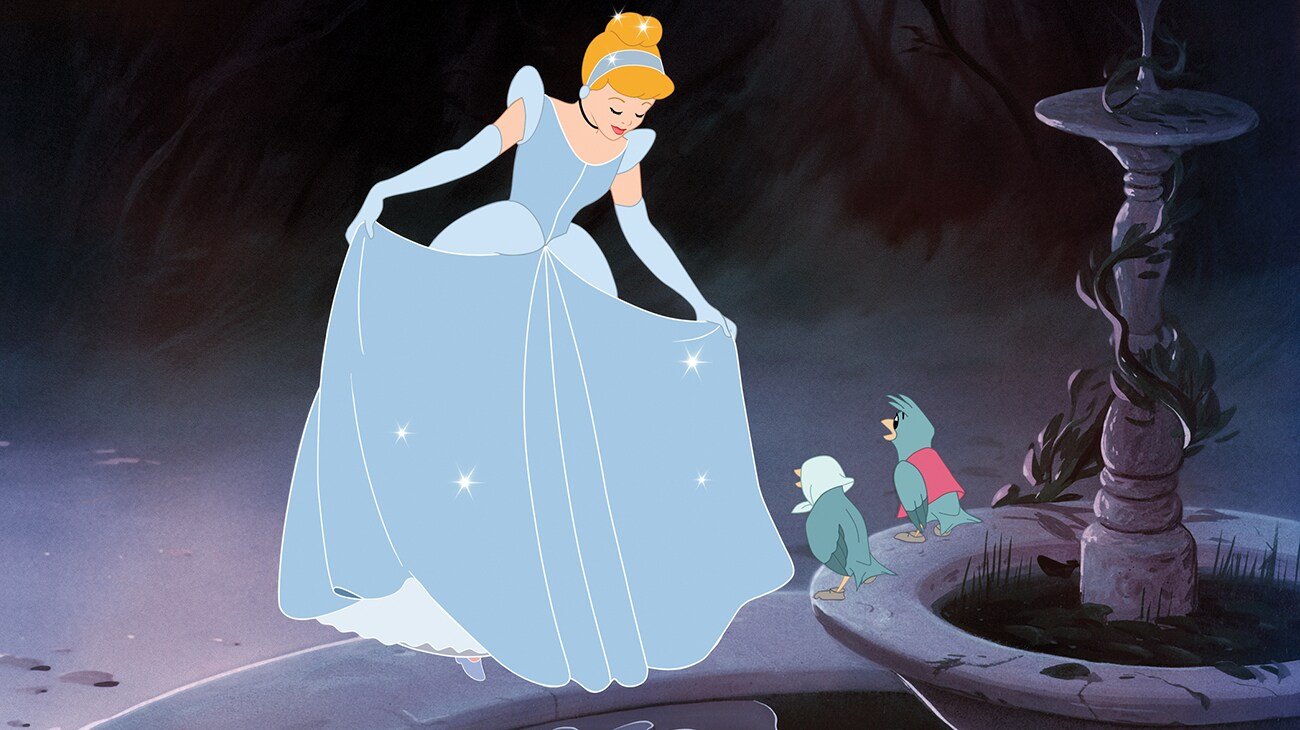Cinderella: Passive Lead or Meek Hero?
We love reassessing the values knit into Disney Princess movies don’t we?
We interpret and reinterpret characters from every vintage and medium, but these heroines seem to attract especially spirited discussion.
Cinderella (1950) – Walt Disney Animation
Probably because of their cultural stature. Maybe their nostalgic cache. Or perhaps the intersection of a multi-billion-dollar industry and the shaping of children’s societal conscience.
Whatever the factors, I’m not immune! I’m interested in the conversation.
And Cinderella (1950) is the first one I’ve actually rewatched with the intention of thinking about it for myself.
THE ACCUSATION
If you’ve ever heard someone ranking Disney Princesses based on moral fibre and strength of character, you’ve probably heard Cinderella receive a low grade.
She is called passive, a victim rescued by a magical godmother and a powerful man. She’s someone to whom the story happens. She is not responsible for exercising courage or risking what she has for a noble and virtuous cause.
Even worse, her deliverance comes through the bestowal of ephemeral wealth accentuating her conventional beauty. The gown and chariot literally melt away as the night unfolds.
Even WORSE, the story portrays women competitively oppressing one another because ‘a woman can only win if another woman loses.’ They compete for the favour of the most desirable man available and treat one of their own terribly to improve their odds.
Cinderella (1950) – Walt Disney Animation
For some, the final scorecard for Cinderella (1950) dismisses her as a passive shell of a woman, not only unworthy of admiration but actively harmful to our children’s healthy development.
I revisited the film with that bias in mind, and was actually pleasantly surprised.
THE RESILIENCE & COMMUNITY
Cinderella lives in the mansion her father earned as a successful merchant. Unfortunately, he dies and leaves her with her stepmother and stepsisters who turn out to be jealous, insecure, and power-hungry. Cinderella now dwells in a grungy tower and serves as cook, maid, and laundress to the abusive trio.
We all know the premise. The injustice was obvious to me even as a child.
What I didn’t catch until viewing as an adult was Cinderella’s impressive mental resilience.
Under the stress of her loss and abuse, she still wakes with an unflappable levity and a ritual of gratitude. She sings of how her life may be one day if she could break free from her oppression. She savours the hope for how life could be if her suffering decreased. She dreams of connecting with someone she would love and would love her.
Watching these opening scenes with grown-up eyes, my jaw hung open. How could anyone call this woman passive and without courage? The courage to cultivate hope and resilience under such a burden is its own triumph.
Which leads me to the second characteristic that impressed me. Cinderella is surrounded by a loving community built on compassionate care for others who are suffering.
As she sings about her dreams, she is sharing it with an assembly of birds and mice who visibly love her and are wearing clothing we discover she made for them.
The appearance of Gus-Gus, the rotund, goofy mouse they rescue from the cat aptly named Lucifer, showcases Cinderella’s foundational attitude: I have very little, but I have enough to share with someone who has less. She welcomes him into their little community and they band together to have one another’s backs.
Cinderella (1950) – Walt Disney Animation
It is likely the resilience she builds with her gratitude and her community is what permits Cinderella to experience joy when she hears about the prince’s ball. Other, less resilient minds might respond with preemptive resentment for an opportunity already lost. But Cinderella still feels hope at the opportunity.
She boldly asks to be included, having not lost all sense of her worth even at the hand of her stepmother and stepsister’s unyielding assaults.
I recognize she has the benefit of writers and animators who make the seemingly impossible happen for her, but isn’t that true of every fictional character modeling anything?
To my eye, Cinderella is a paragon of mental resilience, compassion, and quiet endurance.
THE PAYOFF
“But she doesn’t actually save herself! She’s still a passive character in the story.”
On the contrary! Her active compassion and courage set up her eventual deliverance.
The pink dress she first attempts to attend the ball in, is tailored by the supportive community she built.
After the pink dress is destroyed, her creature friends gather around to grieve with her and comfort her.
When the fairy godmother intervenes, she includes Cinderella’s mice, bloodhound, and Clydesdale in the team that helps her attend the ball.
When the Grand Duke visits the estate in search of Cinderella and Lady Tremaine locks her in the tower, it is the mice and other creatures who break Cinderella free.
Cinderella (1950) – Walt Disney Animation
Cinderella (1950) is a story of a resilient, caring community that helps alleviate each other's suffering and oppose injustice.
I am convinced that dismissing Cinderella as a passive beneficiary of magic, wealth, beauty, and a man’s affection is deeply unfair.
NOT OFF THE HOOK BUT…
I will admit, the film is still a product of its time:
It yields to the habit of making bad characters conventionally unattractive while linking good-hearted characters with conventional beauty.
It also arguably reduces a woman’s plight to the need for an advantageous match with a man.
One also cannot ignore how badly the king’s temper and misogyny are played for laughs and never punished.
My goal is not to excuse the film from all criticism, but I do think the harsh criticism of Cinderella herself is worth pushing back against.
Cinderella (1950) – Walt Disney Animation
Talking about this with a friend, he commented that it really plays into a drifting preference he’s noticed. The masses are prioritizing bold and brazen heroes and over those who exhibit traditional meekness.
Meekness is classically understood as a blend of humility, patience, and restraint of one’s own power, but recently it is often mistakenly equated with weakness, impotence.
It’s understandable that we would not instinctively praise a quality we believe leaves one vulnerable and ineffectual. But a key ingredient to meekness is the careful choice of when and where to exercise power and where to stay one’s hand. Meekness does not mean the absence of power.
My friend’s observation got me further reflecting on how even the boldest Disney Princesses have to learn meekness to balance their brash courage:
Moana grows impatient with her island but must return to understanding that the island community nourished her and actually enabled her to dream. She also learns that attacking her adversary is less helpful than an act of kind restoration.
Merrida bucks against the system but learns that a gentle touch is crucial companion to nerves of steel.
Elsa journeys from fearful suppression, to carte blanche release, and finally to careful generosity and restraint.
Even Vanellope comes to terms with the harmful effect her sharp tongue has if it is used selfishly rather than for compassion and justice.
The grain of the universe (and thus, truthful story-telling) absolutely values courage, but meekness is a necessary ingredient in wise and just courage.
For that reason, I now celebrate Cinderella as a model of meek, courageous resilience.





